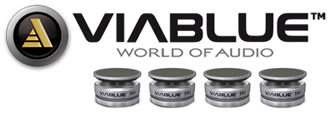New Customer?
Create your accountNo products
Prices are tax included
By buying this product you get 409 loyalty points
Audio-GD R-7HE 2023 MKIII Ladder Balanced DAC R2R FPGA I2S HDMI Amanero 32bit 384kHz DSD Accusilicon Silver
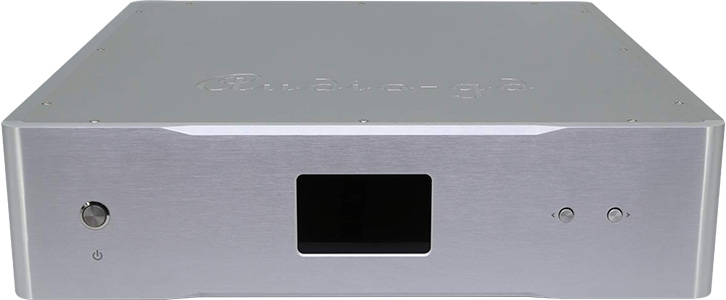
Audio-GD is developing its HE range, composed of its most top-of-the-range products. They benefit from the longest design and testing period since the brand's inception. This R-7HE model is an updated version of the R2R-7-HE. It thus takes up everything that made the success of its predecessor, namely 4 Ladder DAC DA-7 R2R fully symmetrical and discreet, allowing support of the DSD512 and PCM 32Bit 384kHz in the best way. It adds to this an improvement in the isolated Class A power supply for the Amanero module, a larger display with new buttons on the front panel to be able to change the settings without opening the device and finally a Mini USB port on the rear panel to be able to easily perform firmware updates.
It also features a Field-Programmable Gate Array (FPGA) processor identical to those used in very high-end DACs, such as the popular ROCKNA WAVEDREAM DAC. On the restitution side, we also find the performances of the previous model, namely a sound rich in details, a great dynamics, and a wide and deep sound scene.
Audio-GD R-7HE: 2023 Edition MKIII
The 2023 version of the Audio-GD R-27 features the same design and functions as the MKII, but with new improvements.
- [New feature] A more elegant chassis with a central chamfer.
- [New feature] A 2-line screen.
- The USB and HDMI inputs use separate isolators and an isolated power supply to avoid possible interruptions in the flow from your computer or HDMI source.
- The USB input uses a bi-directional isolator that can transmit the I2S signal to the FPGA processor and receive the clock signal from it for accurate transmission of the data stream.
- The HDMI input has its own isolator for better sound quality.
- Use of asynchronous DSD clock technology.
- The SPDIF input now supports DoP.
- The FPGA processes data in parallel mode so that only one clock cycle is required to process and transmit a data frame.
- The I2S input (including USB and HDMI input) has been combined to switch to dual 32bit parallel. The SPDIF input after decoder has been combined to dual 24bit parallel. The DSD input has been combined to dual 64bit parallel.
- Revised and improved clock configuration for better synchronization.
Audio-GD R-7HE: Version FULL UPGRADE
Audio-GD R-7 HE MKIII 2023 EDITION
Version FULL UPGRADE
Audio-GD R-7 HE MKII 2021 EDITION Version UPGRADE
Audio-GD R-8 standard version
Clocks
Accusilicon Clocks
Accusilicon Clocks
TCXO Clocks
USB Interface
Amanero USB interface Galvanic isolation Separate power for USB
Amanero USB interface Galvanic isolation Separate power for USB
Amanero USB interface
New Chassis
New display screen
Audio-GD R-7HE: Seamless components and connectivity
Like its predecessor and many Audio-GD products, the R-7HE uses the brand's Amanero USB technology supporting resolutions up to 32bit 384kHz. The R-7HE has 6 inputs: BNC, RCA Coaxial, Optical, HDMI I2S, RJ45 I2S, USB. These each have interfaces adapted to provide the highest sound quality. On the output side, the R-7HE offers XLR, RCA and ACSS.

Audio-GD R-7HE: R2R 4x DA-7 R2R Design
The R-7HE is a DAC R2R, a design that has become popular thanks to its undeniable sound qualities, especially when integrated into high-end products. While there are several methods for designing a DAC R2R that impact both performance and design complexity, Audio-GD continues to choose the highest quality as usual.
The design chosen by the brand switches the ultra-low tolerance resistors in parallel and an ultra-fast FPGA chip corrects the R2R scale. This design allows you to control and correct each bit distinctly to achieve incredible performance. In addition, with this parallel structure, a single clock cycle allows all the data to be processed, where a series connection would require 8 to 24. Thanks to this architecture, Audio-GD allows its R-7HE to correct imperfections in basic R2R assemblies, i.e. those caused by resistance tolerance.
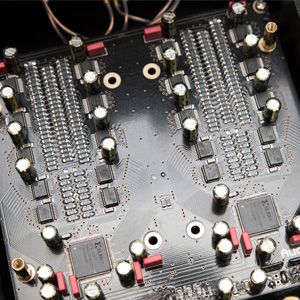
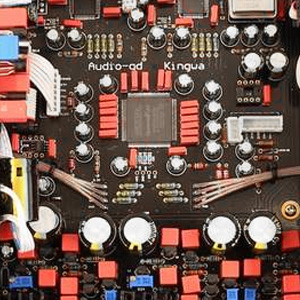
Audio-GD R-7HE: Ultra fast signal processing
FPGA chips, now widely used in the audio world, allow full control of the hardware by a software layer. One of the major advantages of this technology is the ability to easily perform updates, thus allowing the device to be improved without necessarily having to replace components. It is therefore both an efficient and flexible solution.
In the R-7HE, the FPGA is responsible for 3 major points:
- The FPGA acts as an excellent high-performance SPDIF interface, much more efficient than a conventional chip.
- It allows a complete re-clocking with a FIFO design applicable to each input. In this way the output data is fully synchronized with the clock signal to greatly reduce jitter.
- The FPGA also includes 2x, 4x and 8x oversampling, digital filters and 4 different NOS modes.
Audio-GD R-7HE: Discrete symmetrical analog output stage
After the Digital to Analog conversion by the dedicated modules, the analog signal is transported to the discrete balanced output stages using paired FET Class A transistors. The analog sections have no surface components, only discrete components. This diagram allows to obtain a system without any feedback (non-feedback) and a very low output impedance. From a sound point of view, this translates into an absolutely disconcerting neutrality. This output stage also has ACSS analog outputs for even higher detail and definition.
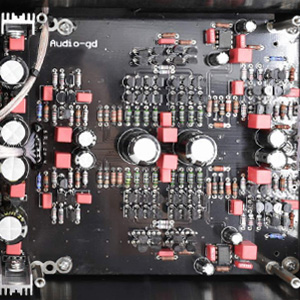
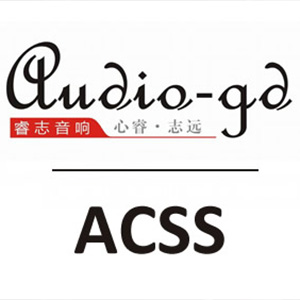
Audio-GD R-7HE: ACSS
Audio-GD has its own technological signature called ACSS for "Audio-GD Current System Signal". Thanks to the firm's expertise and know-how, this technology offers a less colourful, more detailed sound, and unparalleled neutrality. Each of the brand's technical engineers is, in addition to being experienced, a Hi-Fi and Audio enthusiast like you and us.
Audio-GD R-7HE: Easier to use
While the brand has for some time accustomed us to filter settings via switches located under the hood of its devices, it now offers improved ergonomics by proposing to make these settings directly from the front of the device. Buttons allow simple selection of the active filter, with no need to disassemble the unit. The R-7HE offers 4 filters in NOS mode and 3 filters in Oversampling mode. In the same spirit of simplifying DAC use, Audio-GD has integrated a Micro USB port on the rear of the device for easy firmware updates.
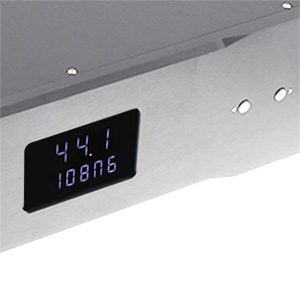
Audio-GD R-7HE: Regenerative Power Supply
The integrated regenerative power supply is an electrical generator integrated directly into the unit and avoids any noise from the main power supply and thus provides an ultra-low noise AC signal to power the preamplifier. It regenerates the main power supply and blocks the noise of the electrical signal to obtain the most neutral sound.
First, a transformer converts the main voltage. DC conversion is carried out by Class A power supplies. A discrete symmetrical regenerative wave generator produces an ultra-low distortion wave at 50Hz.
Symmetrical amplifiers with powerful output stages drive regenerative transformers to produce extremely clean alternating current. This totally clean signal is then routed to separate Class A power supplies for the left and right channels.
The Class A DC power supply with a high input impedance will avoid any noise and allow the amplification stages to have a low output impedance.
In addition, the 4 R-Core transformers provide 295W of power to the system and NOVER capacitors of more than 95000µF are used to ensure a fluid current.
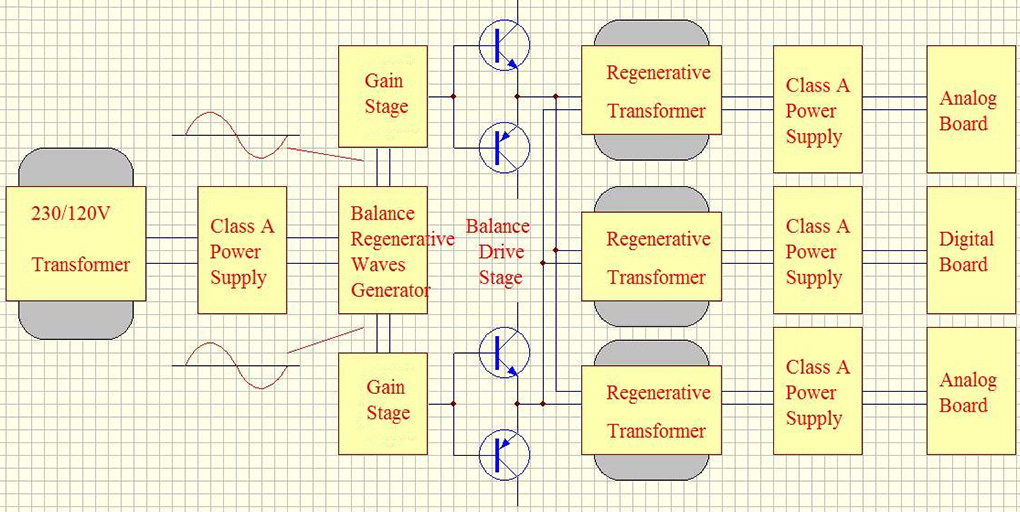
Audio-GD R-7HE: Filtres Oversampling & NOS
Le R-7HE propose plusieurs modes en Oversampling ou en NOS (Non-Oversampling). Si vous souhaitez choisir l'Oversampling il suffit de sélectionner la valeur "O". Si vous souhaitez choisir le NOS il faut alors choisir la valeur "N". Vous pouvez ensuite sélectionner un mode parmi les suivants afin d'adapter la restitution à votre écoute.
Technical characteristics
| Specifications | |
|---|---|
| Product type | DAC R2R |
| SNR | > 120dB |
| Output impedance | < 5 Ohm (XLR, RCA) |
| Output level | RCA: 2.5V XLR: 5V ACSS: 2+2MA |
| Frequency response | 20Hz - 100kHz |
| THD | < 0.0005% |
| Input sensitivity | Coaxial 75 Ohm : 0.5Vp-p Optical : 19dBm |
| Supported OS (USB) | Windows, OSX, Linux, ISO |
| Sampling rate | USB, I2S: 32bits 44.1kHz - 384kHz / DSD 64-512 Coaxial, Optical: 24bits 44.1kHz - 192kHz |
| Inputs | 1* Coaxial RCA SPDIF 1* Coaxial BNC SPDIF 1* Optical Toslink 1* I2S LVDS via HDMI 1* USB Amanero 1* XLR |
| Outputs | 1* Balanced ACSS 1* Balanced XLR 1* Single-Ended RCA |
| Oversampling Filters | |
|---|---|
| Mode 0 | NOS Mode |
| Mode 2 | 2x Oversampling |
| Mode 4 | 4x Oversampling |
| Mode 8 | 8x Oversampling |
| NOS Filters | |
|---|---|
| Mode 1 | Simplest data processing |
| Mode 2 | FIFO data |
| Mode 3 | Fastest data processing |
| General | |
|---|---|
| Consumption | 73W |
| Dimensions | 430*430*125mm |
| Housing material | 100% Aluminium |
| Color | Silver |
| Accessories | 1* AUDIO-GD R-7HE MK3 1* Power cable 1* USB cable 1* Remote control |
| Input | SPDIF |
| Input | BNC |
| Input | XLR |
| Input | Optical |
| Output | RCA |
| Output | ACSS |
| Output | XLR |
| DAC / ADC Chip | NC |
| Max sampling rate | DSD512 |
| Max sampling rate | 384kHz |
| Color | Silver |
| Networking | No |
| Remote Control | No |
No reviews at this time.


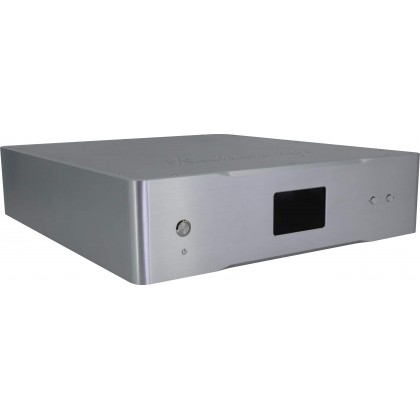











![[GRADE B] AUDIOPHONICS HPA-S500ET Power Amplifier Class D Stereo Purifi 1ET7040SA 2x500W 4 Ohm](https://www.audiophonics.fr/68112-thumb_default/audiophonics-hpa-s500et-stockb.jpg)






















